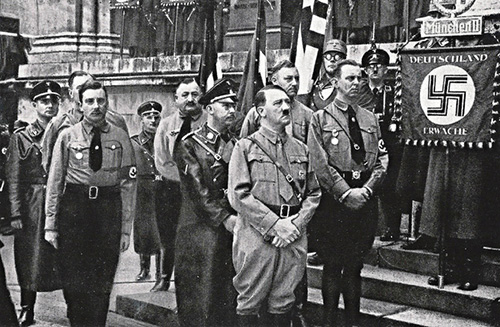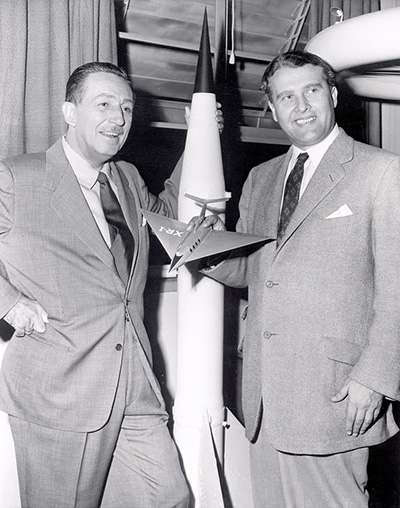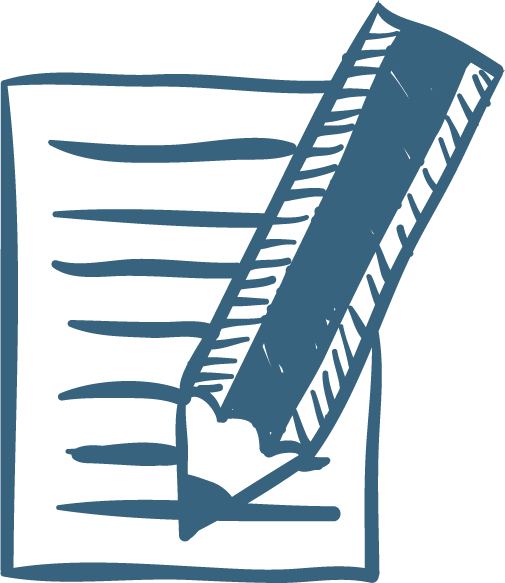Imagine a place full of museums, galleries, amusement parks, night clubs, beaches; all the things that you have always dreamed to find in a place in order to never get bored there.

Brenn, M. (2010). Amsterdam. Retrieved 15/11/16 from https://goo.gl/gU2Eae

gnuckx (2010). VeniceItaly. Retrieved 15/11/16 from https://goo.gl/8Og3jx

Almada, S. (2011). Florence. Retrieved 15/11/16 from https://goo.gl/oLymON

photolibrarian (2016). Sammelwerk, Adolf Hitler, Munich, Germany, Feldherrnhalle. Retrieved 15/11/16 from https://goo.gl/VVYSEp

NASA on The Commons (1954). Walt Disney and Dr. Wernher von Braun. Retrieved 15/11/16 from https://goo.gl/tnd7Kz
By the end of this topic you will be able to match sentences using relative pronouns in order to give further information about places, people or objects. It is important to identify the different relative pronouns and how to use them, this will improve not only your grammar, but your writing skills.
The sequence will be this:
Analyze the following example:

Lawford, H. (2008). Graham’s Fine Art Gallery. Retrieved 15/12/16 from https://goo.gl/e9bsa0
Now, read again…
Can you notice the difference?
Now analyze this situation.
Now you know when to use who, which, where or that. But, have you heard the term defining or non-defining relative clauses? Well, don’t be scared, it is not difficult to identify them.

Activity 1
Caroline wrote a letter to her best friend Mike to tell him about her vacations. Read the letter carefully.

García, M.I. (2016). Writing a Letter.

Activity 2
Traveling abroad can be quite of an experience.
There are many places around the world where you can meet people, admire landscapes and do many activities, like skating, or skiing.
Have you ever traveled abroad?
How was the experience?
What touristic places did you visit?
What activities could you do there?
You are going to listen to Saul who has recently gone to Berlin. He is presenting to his class all the things he did during his trip.


Activity 3
Imagine you were on a long trip during your vacations. Based on the letter Caroline sent to Mike (reading activity) and what Saul told about his trip (listening activity), write your own letter to your best friend telling about your trip. Use 150 – 200 words, at least 6 relative pronouns.
Also check your spelling, punctuation and the grammar of your text and make sure it has the characteristics contained in the rubric.
Once you have finished writing your anecdote, evaluate it using the following checklist. After that, look for your score on the “Results chart” and see how good you are at this skill using comparison and superlatives.
Activity 4
Have you thought about people that you admire and somehow influence you?
Think about a famous person you consider a role model who has influenced you. Write this person’s biography adding only the important details. Finish your writing by explaining why you feel influenced and consider this person a role model. Include at least 6 relative pronouns and revise your text in order to correct grammar, punctuation and spelling mistakes before evaluating it. Use between 100 - 150 words and make sure it has the characteristics contained in the checklist.
Once you have finished writing your text, evaluate it using the following checklist. After that, look for your score on the “Results chart” and see how good you are at this skill using comparison and superlatives.

Activity 5
Using the document you wrote on the previous activity as a guide, tape yourself as you explain the characteristics a person must have to be considered a role model. Listen to the following example to clarify the kind of audio you can do.

Before recording yourself, study the aspects described in the following rubric. Then evaluate yourself using the checklist you have and verify according to your score how good you did it!
Once you are ready you will record your account.
Read the following statements and complete them with the correct relative pronoun. Drag the different options to the appropriate spaces from to complete the sentences. You can know your score at the end of the exercise.
Let’s practice a bit more…
As seen before, relative pronouns help us join sentences to give further information, they are called Relative Clauses and they make your writing fluent.
• Hobbs, M. (2010). For Real Intermediate Student’s Book & Workbook. USA. Helbling Languages.
• Murphy, R. (2012). English Grammar in Use. Singapore: Cambridge University Press [4th ed.]